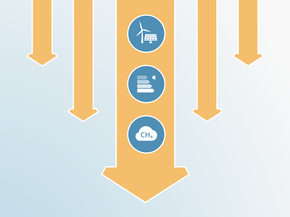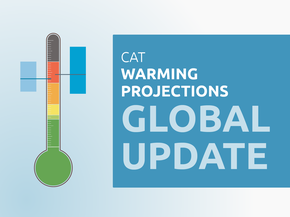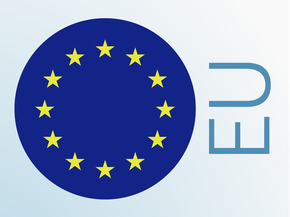ICAO policies & action
The International Civil Aviation Organization
ICAO is a UN agency, which governments created in 1944 with the aim of promoting the safe and efficient development of civil aviation (ICAO, 2020b). ICAO has historically not focused on environmental protection .
In 1983, the ICAO Council established the technical Committee on Aviation Environmental Protection (CAEP) to assist the agency in developing new policies and Standards and Recommended Practices (SARPs) related to environmental protection. In 1997, countries decided that Annex I Parties to the UNFCCC “shall pursue limitation or reduction of emissions of greenhouse gases […] from aviation […] bunker fuels, working through the International Civil Aviation Organization” (UNFCCC, 1997). However, it took the ICAO Assembly—composed of 193 Member States—until 2013 to agree on the goal of “carbon neutral growth from 2020” (ICAO, 2013). In 2016, the ICAO Assembly established the Carbon Offsetting and Reduction Scheme for International Aviation (CORSIA), which started its pilot phase in January 2021 (ICAO Assembly, 2016).
CORSIA
CORSIA is a market-based measure set up by ICAO in 2016 that allows airlines to offset their increase in emissions through carbon offset credits (i.e. emissions units), or through the use of alternative fuels. The scheme runs across three stages: a pilot phase from 2021 to 2023, the first phase from 2024 to 2026, and the second phase from 2027 to 2035.
CORSIA is planned to end in 2035, and ICAO currently has no plans for the period afterward. ICAO’s Member States expect CORSIA to play an important role in achieving carbon neutral growth from 2020 (ICAO, 2019). However, the scheme has significant shortcomings, which mean that CORSIA is unlikely to enable carbon neutral growth for international aviation.
- The majority of carbon offset credits that airlines can purchase under CORSIA come from reforestation projects. However, as forest-based CO2 removals cannot offset ongoing fossil fuel emissions, these removals cannot contribute to “carbon neutral growth,” but instead allow for continued growth in emissions. As of August 2025, six programmes have been deemed eligible for the 2024–2026 compliance period, and all of them offer credits from land-based carbon dioxide removal projects, such as reforestation and afforestation projects (ICAO, 2024a)
However, land-based CDR is not a credible alternative to emission reductions due to its low permanence and limited availability of land, among other issues. Removals can only neutralise the climate impact of fossil fuel emissions if they are stored on a millennial timeframe (Allen et al., 2024; Brunner et al., 2024). It is impossible to realise “carbon neutral growth” based on removals that are only stored for a few decades and then released back into the atmosphere. - There are significant concerns about the quality of carbon offset credits used under CORSIA, where aircraft operators can purchase emissions units to offset any growth in emissions. The ICAO Council developed a set of eligibility criteria, against which it assessed and approved programmes to supply emissions units during CORSIA’s pilot phase (ICAO, 2024a).
However, independent analysis of the programmes approved for the pilot phase show that ICAO did not follow its own eligibility criteria (Schneider et al., 2019). Another independent review of CORSIA’s pilot phase found that 67% of eligible projects from approved programmes posed a significant risk of additionality (Christie-Miller and Howse, 2023). This means that most credits bought by airlines represent emissions reductions or removals that would have happened anyway. Any neutralisation claim on the basis of such non-additional credits is incorrect and misleading.
Although ICAO revised its eligibility criteria for credits issued under Phase 1, experts have warned that a first batch of credits issued for this phase are not additional and, to a large extent, do not represent actual emissions reductions (Streck et al., 2022).
As of August 2025, Guyana approved issuance of over 49 million REDD+ credits to the ART registry (ART, 2025). REDD+ credits usually represent emission reductions from halting deforestation. However, historical deforestation levels are low in high-forest, low-deforestation (HFLD) countries like Guyana, meaning that these countries have limited potential to generate REDD+ credits. The ART registry therefore allows HFLD countries to issue carbon credits based on a theoretical assessment of expected deforestation in the future (Mulder, 2024). Analysis of the first 33.5 million credits issued for Guyana found that about 85% of those result from the HFLD adjustment and are likely to represent hot air instead of actual emissions reductions (Streck et al., 2022). The inclusion of such non-additional—and maybe even non-existent—emissions reductions completely undermines CORSIA’s climate integrity. - Expected emission unit prices are unlikely to trigger investments in operational and technical measures to reduce CO2 emissions from international aviation. Before the COVID-19 pandemic, multiple assessments predicted the supply of emissions units would likely exceed demand during CORSIA’s pilot phase (Fearnehough et al., 2019; Ecosystem Marketplace, 2020).
The pandemic exacerbated this oversupply, as airlines only needed to purchase emissions units for routes that exceeded 2019 emission levels, but emission levels during the pandemic remained well below 2019 emissions. As a result, prices for emissions units were low: in 2024, the average price of an eligible unit was approximately USD 6.37 (Ecosystem Marketplace, 2025).
The demand for emission units is expected to range from 64–162 million for the first phase (Prasanna, 2024). Indicative data suggests that eligible units may be valued between USD 18-50/tCO2 during the first phase (Akhouri et al., 2024; Gourlay and Szabo, 2024). However, prices would need to reach over USD 200/tCO2 to provide airlines with an incentive to use SAF made from waste cooking oil and over USD 800/tCO2 for synthetic SAF (Pavlenko et al., 2019). - CORSIA SAF fuels may not necessarily lead to sufficient emissions reductions. Along with purchasing and cancelling emissions units, airlines can use lower carbon or sustainable aviation fuels that are eligible under CORSIA against their emissions targets (ICAO, 2019). The ICAO Council first outlined its criteria for CORSIA eligible fuels in 2019. In 2021 and 2022, the Council expanded the set of criteria. Sustainable aviation fuels (SAF) produced by a certified fuel producer after January 1, 2024, must satisfy 13 criteria in order to be CORSIA eligible (ICAO, 2022a).
The first criterion stipulates that fuels must achieve net GHG emissions reductions of at least 10% compared to conventional jet fuel. This stipulation allows for a wide range of lower carbon fuels, which are still derived from fossil fuels, to be classified as “CORSIA eligible fuels.” Aircraft operators can claim emission reduction benefits from any reduction in the full lifecycle of the fuels value chain (ICAO, 2018). Despite the low benchmark of 10% emission reductions, the first nine batches of SAF produced for use under CORSIA reduce CO2 emissions by 75–84% (Uniting Aviation, 2023).
The second criterion requires that the production of biofuels used under CORSIA does not result in a stark increase in emissions caused by indirect land use changes (ILUC). Therefore, the Committee on Aviation Environmental Protection (CAEP), which negotiated and prepared most of the technical rules for CORSIA, determined the Indirect Land Use Change (ILUC) emissions from various biofuels. However, the CAEP’s methodology to derive ILUC emissions is based on optimistic assumptions and has led to significant optimism bias in the default ILUC values (Malins, 2019). Accordingly, aircraft operators may claim higher emissions reductions than those actually achieved.
The remaining criteria consider the broader social and environmental implications of sustainable and lower carbon aviation fuel production (IATA, 2024b). ICAO-approved Sustainability Certification Schemes (SCS) are responsible for determining fuel eligibility (ICAO, 2022a). It remains to be seen how stringently these criteria will be applied and how compliance will be certified. - CORSIA’s coverage is limited. The scheme applies only to flights between two states that participate in CORSIA. As a result, for the scheme to cover a majority of international aviation emissions, it is crucial to have participation from the country pairs that represent the majority of international air traffic. The following example makes this clear: if all countries participate, CORSIA would cover 100% of international aviation emissions in the period 2021-2035. If three of the countries responsible for a major share of international air traffic – for example China, the United Kingdom and the United States – do not participate, coverage would drop to merely 57% across CORSIA’s three phases (EDF, 2019).
Participation in CORSIA is voluntary at first and will be phased in for countries above certain economic and travel thresholds over time. However, countries may file a “difference” between their own regulations and the Standards and Recommended Practices (SARPs) that outline the CORSIA rules. By filing a difference, countries can justify non-compliance with CORSIA (Mendes de Leon et al., 2015; ICAO, 2018).
Eighty-three states participated in CORSIA from its inception in January 2021 (ICAO, 2020a). Although these 83 states account for more than 75% of international aviation traffic, flights between them cover less than 50% of international aviation emissions (EDF, 2019). Notably, Brazil, China, India and Russia did not participate in CORSIA’s inception and, as of September 2025, still do not participate. These four countries filed reservations on an ICAO Assembly Resolution that specified important aspects of CORSIA (Brazil, 2019; China, 2019; India, 2019; Russia, 2019). It is not possible to determine whether these countries also filed differences with the CORSIA SARPs, because differences are not publicly available. However, based on the reservations, we consider it likely these four countries did file a difference between the CORSIA SARPs and domestic regulations.
By 2026, the number of participating states will increase to 130 (ICAO, 2025a). More than 50 of them are classified as Small Island Developing States (SIDS), least developed countries (LDCs), or landlocked developing countries (LLDCs) (ICAO, 2024b). Given that—even jointly—developing states are responsible for an insignificant share of international aviation emissions, their participation does not significantly expand CORSIA’s coverage of emissions. - It remains unclear how member states will implement and enforce. Most participating countries have not formalised CORSIA in their national laws, even though ICAO provides clear guidelines under CORSIA’s Standards and Recommended Practices (SARPs) to transpose CORSIA into law. Missing from CORSIA’s SARPs is a well-defined penalty system for noncompliance. Therefore, the responsibility for penalising airlines is shifted to participating countries, which will likely result in heterogeneity in the severity and enforcement of penalties (Gualandi, 2024).
Further analysis
Latest publications
Stay informed
Subscribe to our newsletter





